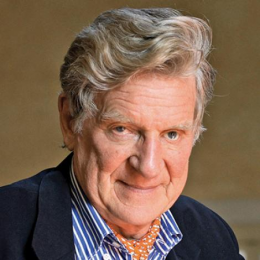Indian & Tibetan River of Buddhism
Examine the history of Buddhism throughout India, South and Southeast Asia, Tibet, and Central Asia, including its view of reality and educational principles.
Modules/Weeks
Weekly Effort
Discipline
School
Format
Cost
Course Description
- Survey the origins of Buddhism in the Indian subcontinent, and its transformation into Mahayana Buddhism during the first millennium CE, with an overview of historical and cultural shifts.
- Examine the reception and development of Indian Buddhist traditions in Tibet and Central Asia during two distinct historical periods, focusing on the immense translation efforts of Indian and Tibetan scholars.
- Explore the unique adaptations and growth of Indian forms of Buddhism in the Tibetan and Central Asian cultural spheres, including an investigation of how these traditions were molded by local beliefs and practices.
- Understand the 20th-21st century manifestations and developments of Tibetan Buddhism across the global modern world, gaining insights into the ongoing evolution and impact of this significant religious tradition.
What You Will Learn
By the end of this course, learners will be able to:’
Understand the comprehensive history and evolution of Buddhism, including foundational concepts such as the Buddha's biography, the Four Noble Truths, the Three Super Educations, the Eightfold Path, and principles of enlightenment social policy and political activism.
Explore the complexities of Indian Buddhism through the study of the three styles, the Universal and Individual Vehicle principles, and the concept of non-duality and its core logic of emptiness as absolute relativity.
Examine the transformation of Tibet from imperialist conquest culture to relatively nonviolent mass monastic culture, focusing on the central features of the esoteric or apocalyptic vehicle, and the influence of the Three Super Educations.
Assess the contrast between Western "materialist modernity" and modern Tibetan "spiritual" or "inner modernity," including the Great Fourteenth Dalai Lama's exemplification of the qualities developed by the Three Super Educations, to gain a multifaceted perspective on the ongoing cultural evolution and influence of Buddhism.
Course Outline
Module 1: Buddha and Dharma: The individual vehicle
Module 2: The Mendicant Sangha and the Cool Revolution in Indic societies
Module 3: The individual vehicle launches the universal vehicle (Mahāyāna)
Module 4: The three styles of the Buddhist development movement
Module 5: Exporting the cool revolution to Tibet
Module 6: Tibet's enlightenment culture and the example of the Dalai Lama
Module 7: Course wrap-up
Instructors

Robert A.F. Thurman is a renowned figure in the field of Buddhist Studies, holding the Jey Tsong Khapa Chair in Indo-Tibetan Buddhist Studies, the first endowed chair in Buddhist Studies in the West. He received his education from Philips Exeter and Harvard, and went on to study Tibet, Tibetan Buddhism, and Asian languages and histories for over fifty years under the guidance of many teachers, including His Holiness the Dalai Lama. Thurman has written scholarly works and founded a new series, Treasury of the Buddhist Sciences, through Columbia University Press. He also writes popular books and lectures worldwide in the "public intellectual" tradition, with a special concern for ethics, human rights, and the fate of the Tibetan culture and people. His academic interest lies in the Indo-Tibetan philosophical, scientific, and psychological traditions and their history, emphasizing their relevance to contemporary currents of thought in philosophy, science, and spirituality.
Please note that there are no instructors or course assistants actively monitoring this course.
